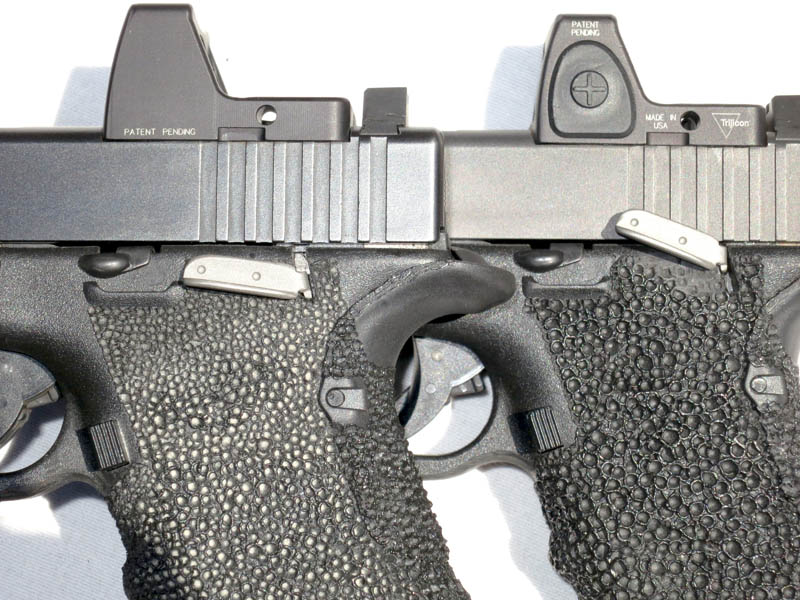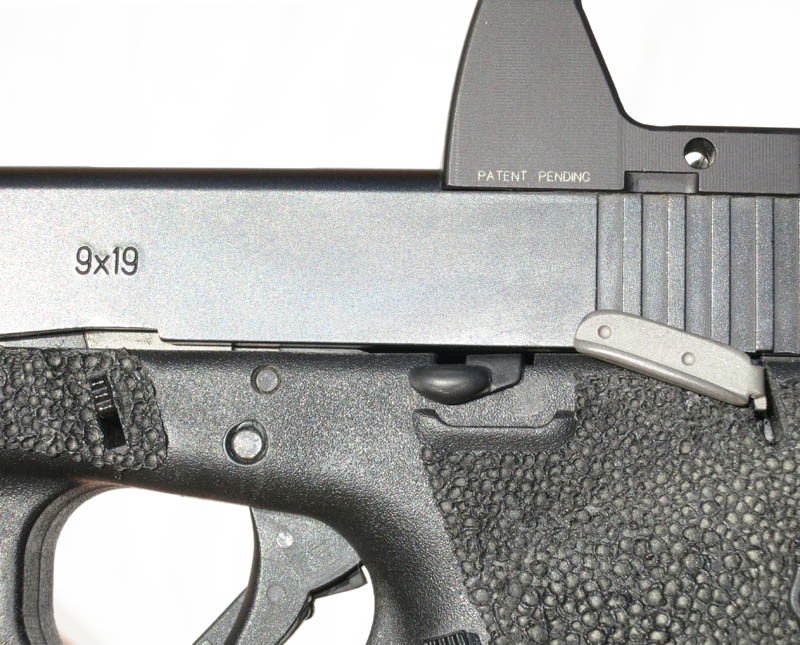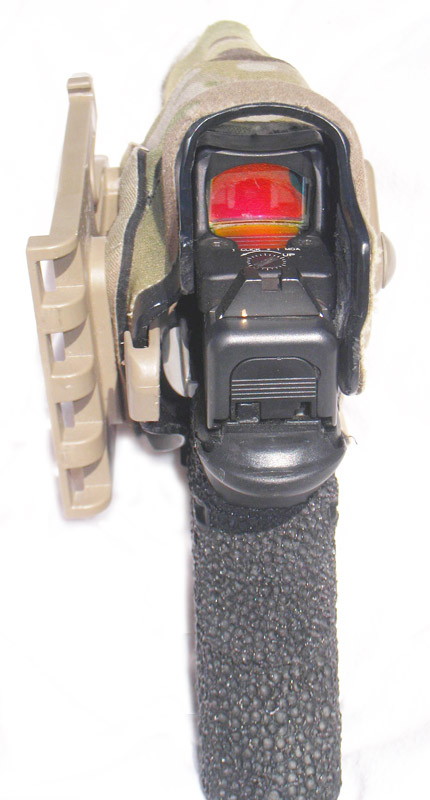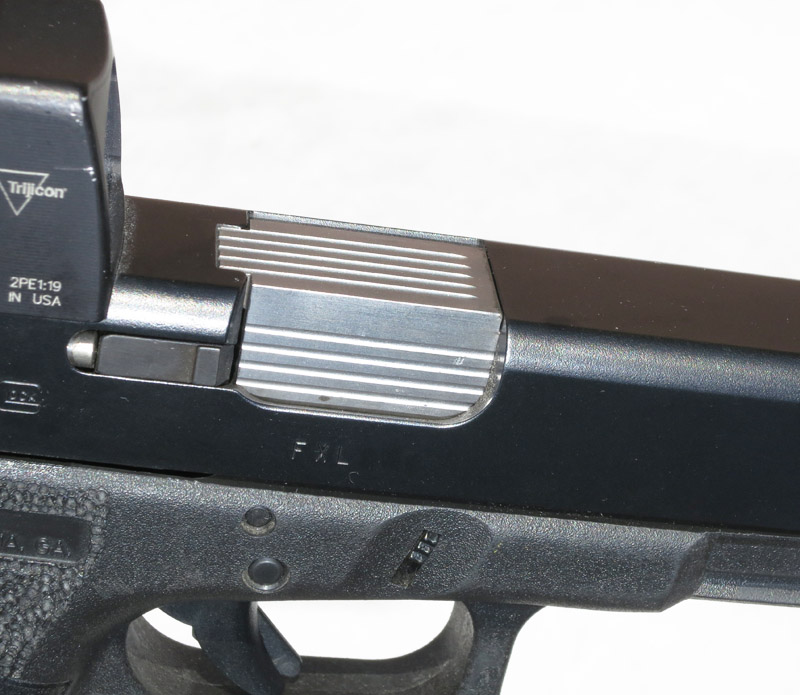As previously noted, I have long preferred having a manual safety on my pistol, as I have twice seen officers’ lives potentially saved when another person gained control of an officer’s pistol, but the engaged manual safety prevented the weapon from firing –I don’t like to think about the outcome if the pistols involved had been a Glock, Sig, XD, revolver, etc…. In the incidents I have witnessed the officers had NO way to mitigate the threat prior to losing the pistol, despite adequate training and good quality Safariland retention holsters. All the DT/retention techniques in the world do not help when an officer is on the ground unconscious/semi-conscious. A manual safety can give officers a brief respite to neutralize the suspect using disarming techniques, access back-up weapons, and allow cover officers the opportunity to react and engage.
I have also seen several Glocks inadvertently fire when a piece of equipment inadvertently depressed the trigger, despite the shooter’s finger being outside of the trigger guard, straight against the frame–an engaged manual safety would have prevented these accidents.
In addition, for those carrying pistols AIWB, a manual safety is a prudent precaution.
The availability of an ergonomic manual safety is one of the main advantages of the M&P over Glock–so much so that I frequently contemplate dropping Glocks and going exclusively to M&P’s w/ambi safeties.
Given the above, I have always been interested in the Cominolli Glock safety, but did not like the poor ergonomics…until now. Former LE officer and current noted gunsmith Dave Lauck of D&L Sports in Chino AZ has developed a modified safety lever for Cominolli equipped Glocks that has much better ergonomics, similar to a 1911.
Keep in mind that the Cominolli safety does NOT work for left handed shooting, as there is only a safety lever for the right thumb.
The D&L Cominolli safety lever works in the same direction as that on the 1911 or M&P—up is on, down is off to allow firing:
Dave recommends using the Ghost forward bullet slide release with his enhanced Cominolli safety lever, as shown below:
The Ghost Glock forward slide release is positioned in about the same location as safety levers on 1911’s and has proven to work very well—so much so that I’ve now installed them on several other standard Glocks without the Cominolli safety.
The D&L safety equipped Glocks did not pose any problems fitting into a wide variety of holsters, including the superb Safariland 6354DO ALS duty holster.
A couple of tight fitting kydex CCW holsters required some minor trimming or gentle heating and re-shaping, but this was easily accomplished.
While at D&L, Dave also installed his stainless steel G17 barrel with sand cuts:
Dave believes that the flutes give dirt and grit somewhere to migrate to, instead of grinding between the barrel hood and the inside of the slide, allowing pistols to run smoother and longer when used in dirty conditions.
Initially I was a bit slower getting my first shot off, but as I’ve got used to the D&L safety equipped Glock over a few thousand rounds, my times are getting back to normal on standardized tests like the 10-8, FAST, LAPD SWAT qual, 99 drill, etc… Accuracy was not effected in any way by the addition of the safety. Each of these D&L safety equipped Glocks has now fired over 2000 malfunction free rounds without any cleaning.
I am not suggesting anyone modify their Glocks; I am stating that having used a variety of pistols on military and LE duty, as well as for CCW over the past 30 years, I now strongly prefer pistols with a manual safety based on my direct experiences with both types. The D&L/Cominolli safety equipped Glocks are an option that appear to work well. Other individuals will have disparate experiences and will make different choices.








Great review Doc! Very interesting developments.
Can you comment on how the D&L safety lever detents? I remember seeing pictures of the first-generation Cominolli safeties that used a dimple stamped into the lever along with two divots impressed into the frame to detent the lever in the up/down positions – it always struck me that, given time and much use in practice/training, the stamped dimple could wear a track in the frame between divots, thus losing the ability to detent in either or both the engaged/dis-engaged positions…